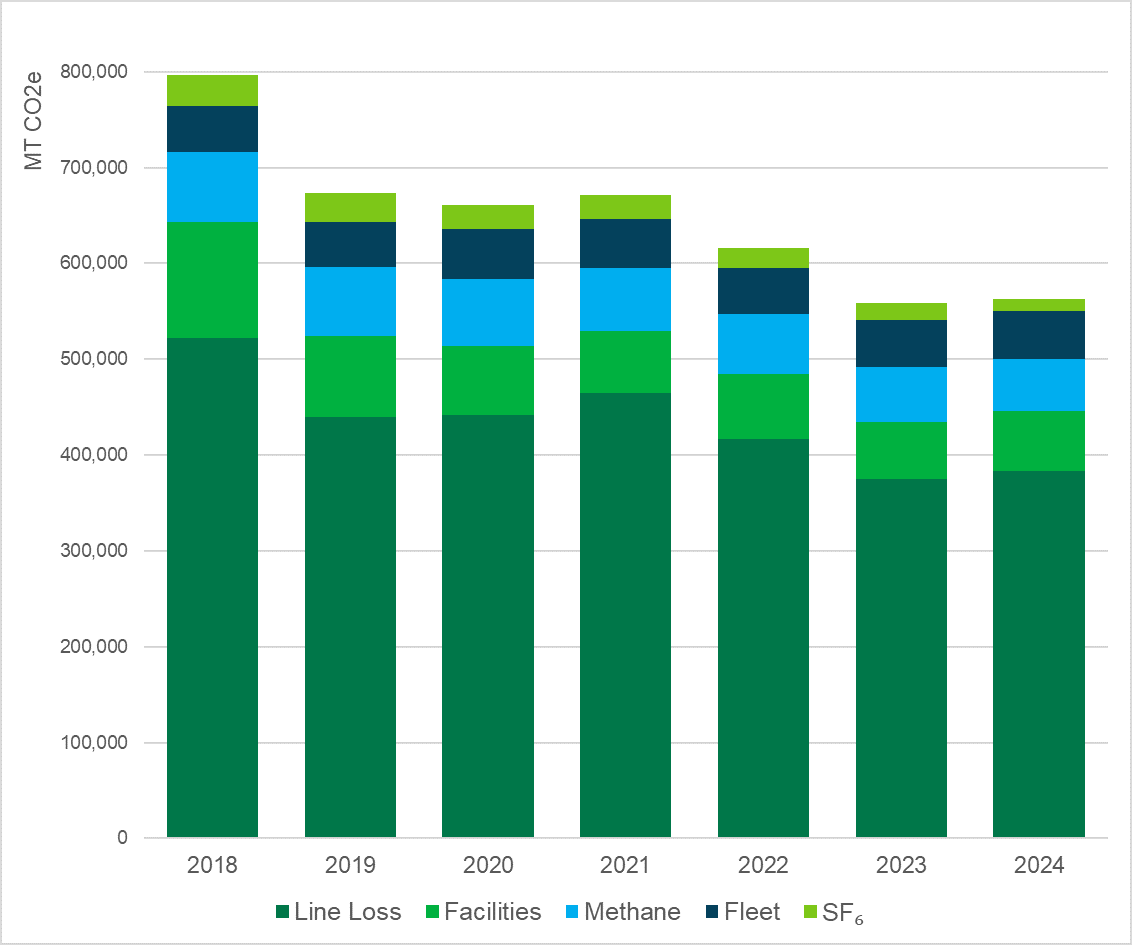Our 2024 Sustainability Report
Download the full PDF report for detailed data, graphs and more.
See the reportInformation on this page is for customers in
{{ town-name }}
Doing our part to address climate change while building a safe, reliable and affordable clean energy future
We are proud to contribute to a clean energy transition with a goal of lowering emissions from the electric, heating and transportation sectors, and to serve a critical role in supporting state climate objectives.
We empower our customers to make informed decisions around energy consumption and take part in the clean energy transition by reducing their own carbon footprints through energy efficiency measures and the interconnection of renewable generation.
While we have already made strong progress reducing our operational (Scope 1 and 2) greenhouse gas (GHG) emissions by nearly 30% since 2018, we expanded our targets in 2025 to reduce these emissions by 45% by 2035.
We’re also looking longer term with the introduction of a target to achieve Net Zero emissions by 2050 which includes Scope 1 and 2 as well as the Scope 3 emissions associated with our customers’ energy use - the most significant and challenging portion of our overall GHG footprint.
We remain focused on adapting and responding to more frequent and severe weather events, maintaining our ability to supply critical infrastructure, delivering essential services to our customers and doing our part to mitigate climate change through emissions reduction measures.
You can read our Climate Adaptation and Mitigation Plan for more details of our efforts.
Our plan for working toward our near-term GHG target is to continue our focus on reducing operational emissions in five key areas.

Line loss refers to the loss of energy and associated emissions resulting from the flow of electricity across the grid. To mitigate this loss, we’re improving the efficiency of our transmission and distribution system through grid modernization projects and equipment upgrades.
We’re also helping to enable the interconnection of clean energy, which will have the most significant impact on reducing this source of emissions. However, the demand for electricity has been outpacing the development of large-scale clean energy development, so we expect this emission source to be a continued challenge until clean energy generation in the region accelerates.
Methane emissions can leak from aging natural gas pipes and be released into the atmosphere. Since 2018, we have replaced more than 900 miles of this old leak-prone natural gas infrastructure with materials that mitigate leaks, helping to achieve a reduction of approximately 20,000 MT of CO2e.
In addition to mitigating leak-prone pipe, we're advancing longer-term decarbonization solutions for our natural gas customers that include exploring clean technology alternatives. For example, in June of 2024 a first-of-its-kind utility-scale networked geothermal pilot project began servicing about 135 customers in Framingham, Massachusetts. Customers on the geothermal loop receive a cost-effective, low-carbon source of heating and cooling for the duration of the 2-year pilot, which will inform the strategy for continued deployment of this technology.
Facilities that we own are assessed to identify opportunities to reduce electricity and fuel use. We're upgrading heating and cooling systems, installing building control and management systems, identifying electrification opportunities and partnering with our energy efficiency teams to develop plans for further improvement.
Fleet emissions come from fuel consumption by the vehicles that play an important role in keeping our power and gas systems running safely and reliably. To reduce the associated emissions, we incorporate biodiesel into our fuel sources and adopt hybrid and electric vehicle options to our fleet as we can. Over 30% of our bucket trucks now utilize hybrid technology and we continue to look for opportunities to adopt electric vehicles with a goal of having 25% of the fleet comprised of hybrid or electric vehicles by 2030.
SF6 is a gas we rely on to insulate high voltage switchgear in our transmission system. We're making progress reducing leaks of this potent greenhouse gas through strong maintenance and improved internal tracking, which has supported a 60% reduction of SF6 emissions since our baseline year of 2018.
We have also been working with industry partners to pilot SF6-free equipment, including a project that introduced the first-ever application of an EconiQ 345 kV circuit breaker at a substation in East Haddam, Connecticut. This new breaker uses an eco-efficient gas mixture as the insulating medium in place of SF6. In anticipation of additional non-SF6 solutions coming to market, we have designed certain equipment, including a substation in Cambridge, Massachusetts, to be ready for an alternative when it's available for this application.
We serve about 4.6 million customers across Connecticut, Massachusetts, and New Hampshire. When our customers use natural gas and electricity that we provide, the emissions associated with that energy use are reflected in our indirect Scope 3 emissions.
To reduce these emissions and ultimately achieve our target of Net Zero emissions, we will be heavily dependent on the policies and actions of our states to carry out their climate goals and accelerate clean energy generation. We will continue to play a critical role in this transition over the long-term to prepare the grid for increased electrification and support our states as policies and initiatives evolve.
Energy efficiency programs will also be critical to providing customers with the opportunity to lower their energy use and, as a result, also lower their energy costs. We will continue to interconnect customer renewables and storage for further reductions in addition to rolling out advanced technology like Advanced Metering Infrastructure so that customers can make informed decisions to use energy more efficiently and participate in demand reduction programs like demand response.
Download the full PDF report for detailed data, graphs and more.
See the report